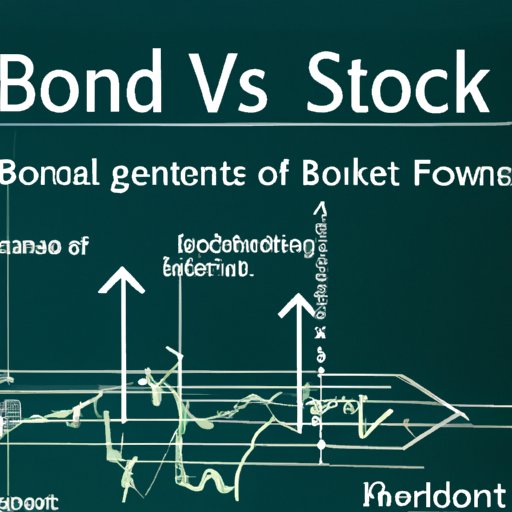Introduction
An investment vehicle is any asset or instrument that is used to acquire financial returns. Investment vehicles come in many forms and can be used by individuals, businesses, and organizations to pursue their financial goals. They are often divided into two categories: traditional investments and alternative investments.
Traditional investments include stocks, bonds, and mutual funds, while alternative investments include real estate, precious metals, and venture capital. Each type of investment vehicle has its own set of risks and rewards, and it is important to understand the different types before making an investment decision.
Overview of Investment Vehicles: What They Are, Types and Benefits
Investment vehicles are assets that are purchased with the intention of generating a return over time. The return may come in the form of income, appreciation of the asset’s value, or both. Investment vehicles can be divided into two main categories: traditional investments and alternative investments.
Traditional investments are those that are widely accepted and traded on the stock market. These include stocks, bonds, mutual funds, and exchange-traded funds (ETFs). Traditional investments typically offer lower risk and higher liquidity than alternative investments.
Alternative investments are those that are not as widely accepted or traded on the stock market. These include venture capital, private equity, real estate, and precious metals. Alternative investments typically offer higher risk and lower liquidity than traditional investments.
The benefits of investing in any type of investment vehicle include the potential for long-term capital appreciation, diversification of your portfolio, and the ability to earn income from the asset. However, it is important to remember that all investments involve some level of risk, and it is important to research each type of investment vehicle before making an investment decision.
Investing in Real Estate: A Comprehensive Guide to Investment Vehicles
Real estate is one of the most popular types of investment vehicles. Investing in real estate can be a great way to grow your wealth over time and provide a steady source of income. There are several different types of real estate investment vehicles, including residential and commercial property, land, and REITs (real estate investment trusts).
Understanding the Basics
Real estate investments involve purchasing properties or land with the intention of renting them out or selling them for a profit. Investors can purchase individual properties, such as single-family homes or multi-unit complexes, or they can invest in larger projects, such as apartment buildings or shopping centers. It is important to note that real estate investments are illiquid, meaning that they cannot be easily converted into cash.
The Different Types of Investment Vehicles
There are several different types of real estate investment vehicles, including residential and commercial property, land, and REITs. Residential property includes single-family homes, duplexes, triplexes, and fourplexes. Commercial property includes office buildings, shopping centers, hotels, and industrial properties. Land investments include raw land, developed land, and agricultural land. Finally, REITs are publicly traded companies that own and manage real estate portfolios.
Pros and Cons of Investing in Real Estate
The pros of investing in real estate include the potential for long-term capital appreciation, the ability to earn rental income, and the potential for tax deductions. Additionally, real estate investments can be leveraged with debt, allowing investors to purchase more properties with less money down. On the other hand, the cons of investing in real estate include the illiquidity of the asset, the need for ongoing maintenance and repairs, and the potential for tenant problems.
Mutual Funds and Exchange-Traded Funds: Understanding Investment Vehicles
Mutual funds and exchange-traded funds (ETFs) are two of the most popular types of investment vehicles. Mutual funds are actively managed collections of securities, such as stocks, bonds, and other investments. ETFs are similar to mutual funds, but they are passively managed and trade like stocks on the stock market.
What Are Mutual Funds?
Mutual funds are professionally managed portfolios of stocks, bonds, and other investments. Investors can choose from a variety of different types of mutual funds, depending on their risk tolerance and financial goals. Mutual funds can be purchased through a broker or directly from the fund company.
What Are Exchange-Traded Funds?
Exchange-traded funds (ETFs) are similar to mutual funds, but they are passively managed and trade like stocks on the stock market. ETFs are a popular choice for investors who want to diversify their portfolios without having to actively manage their investments. ETFs can be purchased through a broker or directly from the ETF company.
Pros and Cons of Mutual Funds and ETFs
The pros of investing in mutual funds and ETFs include the ability to diversify your portfolio, the potential for long-term capital appreciation, and the cost-effectiveness of these investments. On the other hand, the cons of investing in mutual funds and ETFs include the lack of control over the investments, the potential for fees and commissions, and the potential for losses.

Bonds and Stocks: The Basics of Investment Vehicles
Bonds and stocks are two of the most popular types of investment vehicles. Bonds are debt instruments issued by governments and corporations to raise money, while stocks are shares of ownership in a company. Both bonds and stocks can be bought and sold on the stock market.
What Are Bonds?
Bonds are debt instruments issued by governments and corporations to raise money. When an investor buys a bond, they are essentially lending the issuer money. In exchange, the issuer pays interest to the investor at regular intervals until the bond matures. At maturity, the investor receives the principal amount of the bond.
What Are Stocks?
Stocks are shares of ownership in a company. When an investor buys a stock, they become a partial owner of the company. As the company’s profits increase, so does the value of the stock. Stocks can be bought and sold on the stock market, and investors can also buy and sell options contracts on stocks.
Pros and Cons of Bonds and Stocks
The pros of investing in bonds and stocks include the potential for long-term capital appreciation, the ability to diversify your portfolio, and the potential for dividend income. On the other hand, the cons of investing in bonds and stocks include the potential for losses, the need to actively manage your investments, and the potential for fees and commissions.

How to Choose the Right Investment Vehicle for Your Financial Goals
Choosing the right investment vehicle for your financial goals can be a daunting task. There are a variety of different types of investment vehicles available, and it is important to evaluate your risk tolerance, assess your time horizon, and diversify your portfolio before making an investment decision.
Evaluating Your Risk Tolerance
It is important to consider your risk tolerance when choosing an investment vehicle. Some investments carry more risk than others, and it is important to make sure you are comfortable with the level of risk associated with any potential investment. Evaluating your risk tolerance will help you determine which type of investment vehicle is best suited for your financial goals.
Assessing Your Time Horizon
Your time horizon is another important factor to consider when selecting an investment vehicle. Some investments are better suited for short-term goals, while others are better suited for long-term goals. Assessing your time horizon will help you determine which type of investment vehicle is best suited for your financial goals.
Diversifying Your Portfolio
Finally, it is important to diversify your portfolio when selecting an investment vehicle. Diversification helps reduce risk by spreading your investments across multiple asset classes. Investing in a variety of different types of investment vehicles can help ensure that your portfolio is well-balanced and able to withstand market fluctuations.

Investing in Precious Metals: An Introduction to Investment Vehicles
Precious metals, such as gold, silver, platinum, and palladium, are another type of investment vehicle. Investing in precious metals can be a great way to diversify your portfolio and hedge against inflation. There are several different types of precious metals investments, including physical bullion, coins, certificates, futures, and ETFs.
What Are Precious Metals?
Precious metals are rare metals that have a high intrinsic value due to their scarcity and durability. Gold, silver, platinum, and palladium are the most commonly traded precious metals. Precious metals are primarily used in jewelry and electronics, but they can also be purchased as investments.
The Different Types of Precious Metals Investments
There are several different types of precious metals investments, including physical bullion, coins, certificates, futures, and ETFs. Physical bullion is the most common type of investment, and it involves purchasing physical bars or coins made of precious metals. Coins are slightly different than bullion, as they are typically made with a higher purity of the metal and carry a collectible value. Certificates are paper documents that represent ownership of a certain amount of precious metals. Futures are contracts that allow investors to buy or sell an agreed-upon amount of precious metals at a predetermined price. Finally, ETFs are exchange-traded funds that track the price of a precious metal.
Pros and Cons of Investing in Precious Metals
The pros of investing in precious metals include the potential for capital appreciation, the ability to hedge against inflation, and the potential for diversification. On the other hand, the cons of investing in precious metals include the lack of liquidity, the potential for storage costs, and the potential for price manipulation.
Conclusion
Investment vehicles are assets that are purchased with the intention of generating a return over time. There are several different types of investment vehicles, including traditional investments, such as stocks and bonds, and alternative investments, such as real estate and precious metals. It is important to understand the different types of investment vehicles and evaluate your risk tolerance, assess your time horizon, and diversify your portfolio before making an investment decision.
(Note: Is this article not meeting your expectations? Do you have knowledge or insights to share? Unlock new opportunities and expand your reach by joining our authors team. Click Registration to join us and share your expertise with our readers.)
